


Up Close With a Zapotec Urn

Hi, I'm Lucy, and I'm at the American Museum of Natural History. Today I'm interviewing an urn made by the Zapotec people of ancient Mexico. Come with me as I ask about his not-so-humble beginnings, his amazing discovery, and the responsibilities of being an ancient artifact.
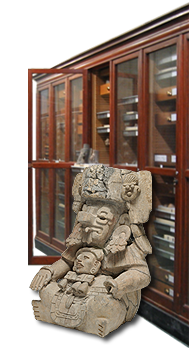
Lucy: I just can't believe I'm sitting next to an ancient urn that was buried for over a thousand years. It must have been an amazing journey from that ancient tomb to your current stardom.
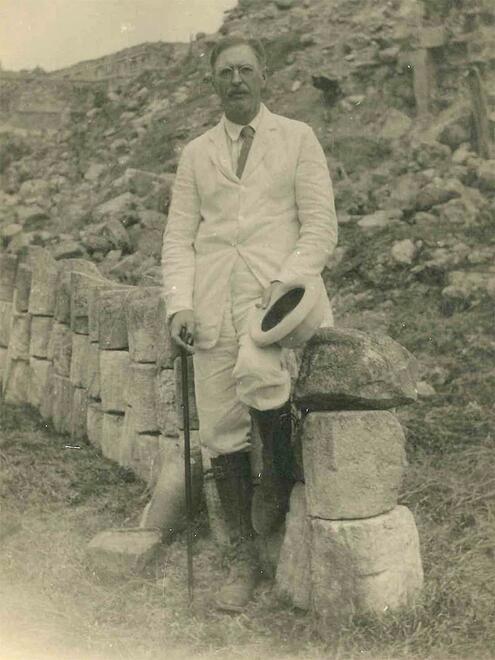
Zapotec Urn: Yes, Lucy, it was. And I owe it all to Marshall Saville . He found me in 1898, on one of the first archaeological projects ever conducted in Mexico . Imagine—during his first year of digging, he found me! Can you believe the luck? Dr. Saville was an important figure in archaeology, and the first curator of Mexican archaeology at the American Museum of Natural History.
Lucy: Where did he find you?
Zapotec Urn: He found me near a tomb in Xoxocotlán (ho-ho-coat-lan), a village in the valley of Oaxaca where the Zapotec once lived.
Lucy: How did he know where to look?
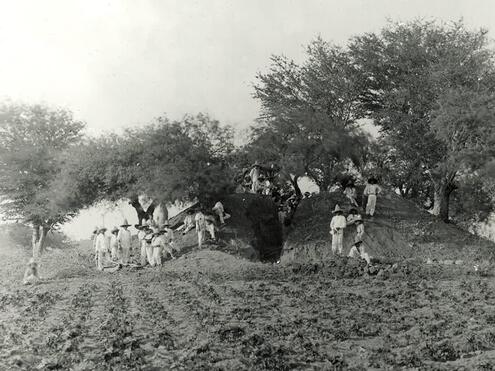
Zapotec Urn: Well, it wasn't easy. When the Zapotecs abandoned the site, all the buildings fell into ruin. Over hundreds of years, a mound of dirt and grass covered the tomb where I was buried. Dr. Saville had been excavating these mounds to find out what they were. At the same time, local people were planting crops in the area. One group started to dig a hole in one of the mounds because they wanted to destroy an ant nest that was eating their crops. As they were digging, they discovered a stone wall, which eventually lead them to me.
Lucy: How did Dr. Saville know what he had found?
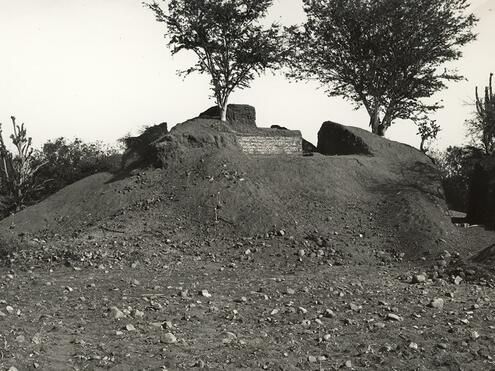
Zapotec Urn: Lucky for me, he recognized the importance of the wall because he had started to figure out that there were buildings hidden in the mounds. You see, in ancient Mexico, palaces and temples were built on stone bases or platforms. And important people were buried in these platforms. Dr. Saville realized that the stone wall was really the platform that would have supported an important building—and that he'd find tombs underneath. When he started to clear the rubble, there I was, just sitting on the floor as if I'd been waiting there for him all that time.
Lucy: We hear you were discovered with some other urns. Were they friends of yours?
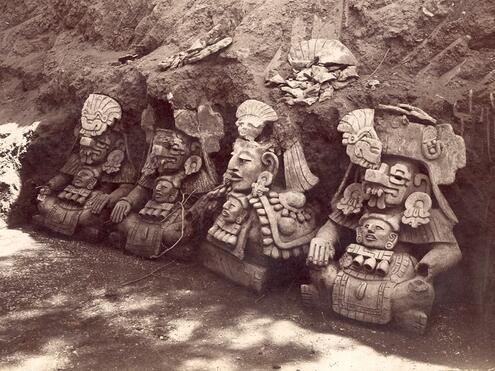
Zapotec Urn: Yes, I knew those other four urns well. After all, we were in that tomb together for over a thousand years. In fact, we had a hard time telling each other apart at first, since we're all large decorated clay funeral urns. Four of the five of us look alike, wearing masks of Cociyo and similar capes. One of us has no mask and a different cape, but we have never figured out why. I hope archaeologists can solve that mystery some day.
Image Credits:
Historical photos of Marshall Saville, dig site, and uncovered Zapotec Urns, courtesy of AMNH, Division of Anthropology; Lucy, Zapotec Urn and cabinet, courtesty of AMNH / Craig Chesek.




 Biodiversity
Biodiversity
 Brain
Brain
 Genetics
Genetics
 Marine BiOLogy
Marine BiOLogy
 MicrobiOLogy
MicrobiOLogy
 PaleontOLogy
PaleontOLogy
 ZoOLogy
ZoOLogy
 AnthropOLogy
AnthropOLogy
 ArchaeOLogy
ArchaeOLogy
 Astronomy
Astronomy
 Climate Change
Climate Change
 Earth
Earth
 Physics
Physics
 Water
Water
